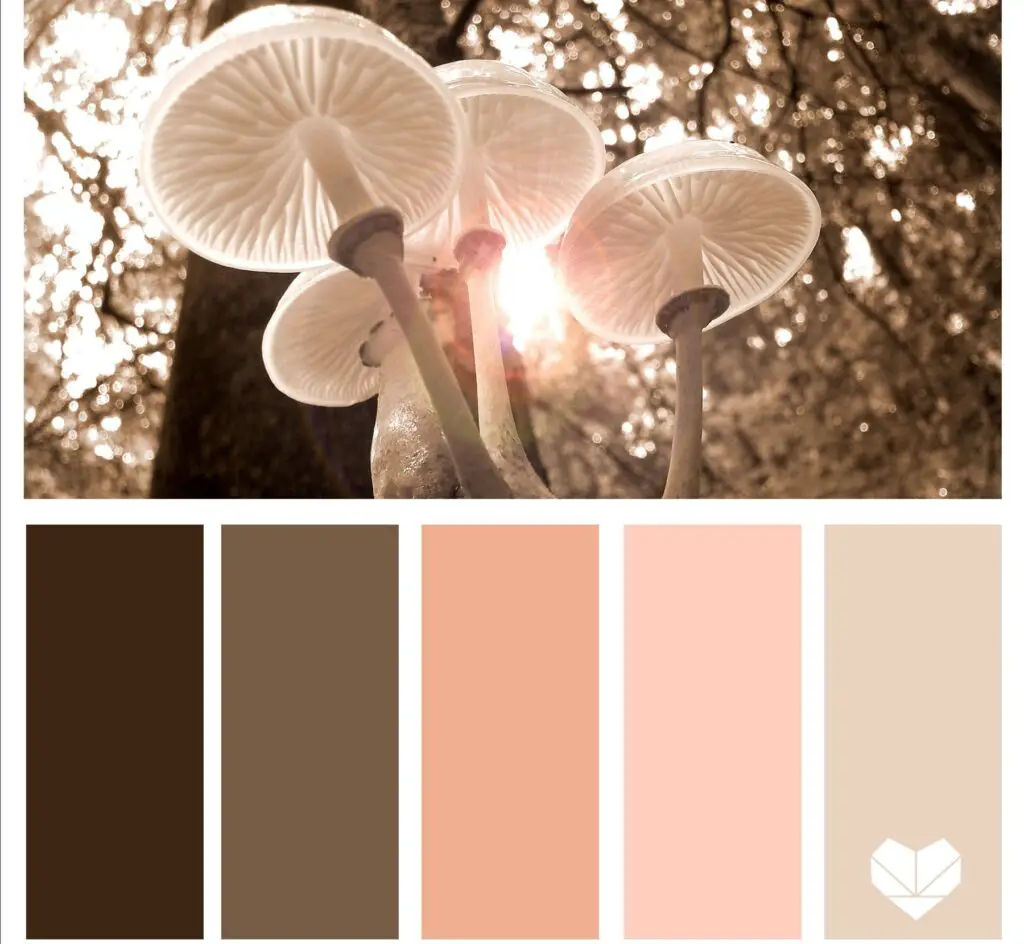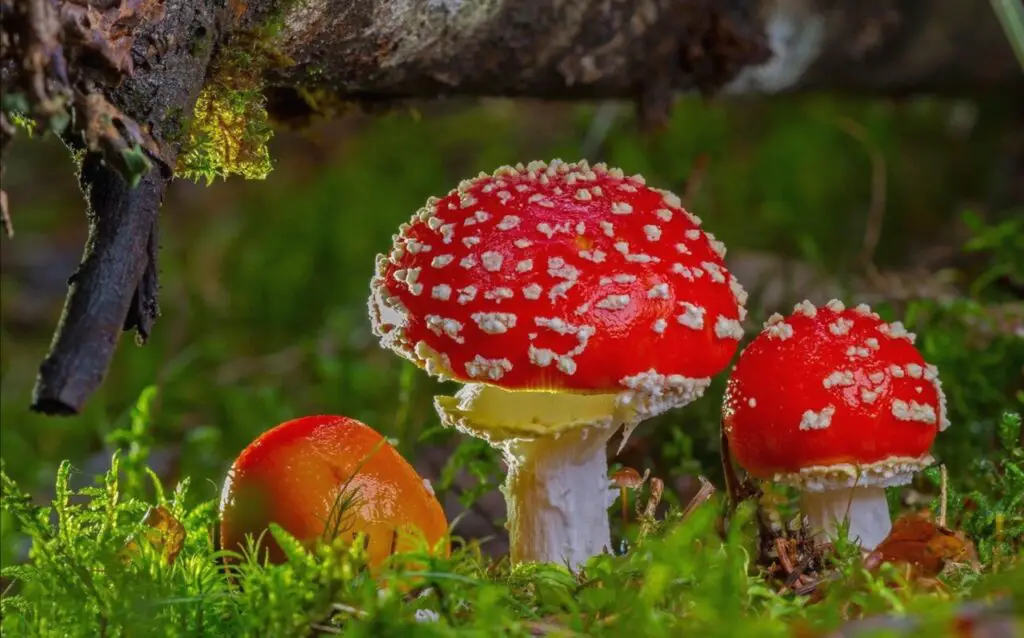What is the Colours of Mushrooms? Mushrooms colours come in a variety of colors, including white, brown, red, yellow, and orange. These colors are determined by the pigments present in the fungi, such as melanin and carotenoids.
The diverse range of colors in mushrooms serves various purposes, from attracting insects for spore dispersal to providing camouflage in their natural habitats. Some mushrooms even change color depending on their age or the environment they grow in. The vibrant hues of mushrooms not only make them visually appealing but also play a crucial role in their survival and reproduction.
Let’s explore the fascinating world of mushroom colors and the significance behind their vivid hues.
The Vibrant World Of Fungi
Mushroom Hues And Their Ecological Roles
From the deepest purples to the brightest yellows, mushrooms display a remarkable array of colors. These hues play a crucial role in the ecological landscape, influencing everything from biodiversity to nutrient cycling. Let’s delve into the captivating world of mushroom pigmentation and its ecological significance.
The Spectrum Of Mushroom Pigmentation
Mushrooms come in a diverse spectrum of pigmentation, ranging from earthy browns and greens to vibrant reds and blues. This rich palette serves as more than just a visual spectacle; it also plays a vital role in the survival and reproduction of these fascinating fungi.

Decoding Mushroom Colors
Mushrooms come in a wide array of colors, each adding a touch of beauty to the natural world. But have you ever wondered what gives mushrooms their vibrant hues? In this section, we will explore the fascinating world of mushroom colors and delve into the pigments and genetic factors that contribute to their stunning variations.
Pigments And Their Chemical Composition
Mushrooms owe their colors to various pigments, each with its own unique chemical composition. These pigments are responsible for absorbing and reflecting light, resulting in the colors we perceive. Here are some of the most common pigments found in mushrooms:
| Pigment | Chemical Composition |
|---|---|
| Carotenoids | Yellow, orange, and red hues; composed of carbon and hydrogen |
| Anthocyanins | Red, purple, and blue shades; contain flavonoid compounds |
| Melanins | Brown and black pigments; formed from amino acids |
These pigments interact with light in different ways, resulting in the diverse colors observed in mushrooms.
Genetics Behind The Color Variations
The captivating range of mushroom colors can also be attributed to genetics. The genetic makeup of a mushroom determines the presence and expression of specific pigment genes. Mutations or variations in these genes can lead to the emergence of unique colors.
For example, a gene coding for an enzyme involved in pigment synthesis may undergo a mutation, altering the enzyme’s structure or function. This change can result in the production of a new pigment or the modification of existing ones, leading to color variations in mushrooms.
The inheritance of these genetic traits also plays a role in determining mushroom colors. Certain color traits may be dominant, while others are recessive. The combination of genes inherited from both parent mushrooms influences the resulting color in their offspring.
Understanding the pigments and genetic factors behind mushroom colors adds a layer of complexity to their beauty. Whether it’s the vibrant red of a fly agaric or the earthy brown of a portobello, each mushroom color tells a unique story of nature’s artistry.
Edible Vs. Poisonous: Color As A Clue
The colors of mushrooms can provide valuable clues as to whether they are safe to eat or potentially toxic. Understanding the common color traits of edible mushrooms and being able to identify warning colors in toxic species is essential for foragers and mushroom enthusiasts. Let’s explore the significance of color in distinguishing between edible and poisonous mushrooms.
Common Color Traits Of Edible Mushrooms
Edible mushrooms come in a diverse range of colors, including white, brown, gray, and yellow. While the color alone is not a definitive indicator of edibility, it can provide valuable information when combined with other identification features. For example, the classic white button mushroom and the earthy brown portobello are both popular edible varieties. The bright yellow chanterelle and the grayish-blue oyster mushroom are also sought after for their culinary value.
Warning Colors In Toxic Species
Some toxic mushrooms exhibit distinct colors that serve as warning signs to potential foragers. Bright red, orange, and yellow hues are often associated with toxic or hallucinogenic mushrooms. For instance, the iconic red cap with white spots of the fly agaric is a well-known warning color in the mushroom world. Similarly, the bright yellow of the death cap mushroom signals its deadly toxicity. These warning colors act as nature’s way of signaling danger and deterring consumption.

Mushrooms In Folklore And Culture
Throughout history, mushrooms have held a special place in human culture and folklore. These fascinating organisms have captivated the human imagination, leading to the creation of numerous myths, symbols, and artistic representations. One of the intriguing aspects of mushrooms is the variety of colors they come in, each carrying its own symbolism and significance. In this article, we explore the symbolism and myths associated with colors, as well as the use of vibrant mushrooms in art and storytelling.
Symbolism And Myths Associated With Colors
Colors have long been associated with specific meanings and emotions, and mushrooms are no exception. Different colored mushrooms have been linked to various symbolic interpretations in folklore and mythology. Here are some examples:
- Red mushrooms: Red mushrooms, such as the iconic fly agaric (Amanita muscaria), often symbolize passion, power, and danger. They are commonly featured in fairy tales and associated with magical beings.
- White mushrooms: White mushrooms, like the white button mushroom (Agaricus bisporus), are often associated with purity, innocence, and enlightenment. They can represent divine presence or spiritual awakening.
- Black mushrooms: Black mushrooms, such as the black truffle (Tuber melanosporum), are often connected to mystery, secrecy, and the unknown. They are sometimes associated with dark magic or forbidden knowledge.
- Yellow mushrooms: Yellow mushrooms, like the chanterelle (Cantharellus cibarius), are often linked to joy, happiness, and sunshine. They can represent warmth, positivity, and the arrival of good fortune.
Use Of Vibrant Mushrooms In Art And Storytelling
Throughout history, vibrant mushrooms have inspired artists, writers, and storytellers to create captivating works of art and literature. Their unique shapes, colors, and textures have been depicted in various mediums, including paintings, sculptures, and illustrations. Mushrooms have been featured in folklore and fairy tales, often serving as magical objects or gateways to otherworldly realms. They have also been incorporated into mythology, where they play roles in ancient legends and creation stories.
Artists and storytellers continue to draw inspiration from mushrooms, using their vibrant colors to convey emotions, symbolism, and narratives. The vivid hues of mushrooms can evoke a sense of wonder, enchantment, and even danger, adding depth and intrigue to visual and written works.
The Role Of Color In Mushroom Identification
When it comes to identifying mushrooms, color plays a crucial role in distinguishing between different species. The diverse spectrum of colors found in mushrooms can provide valuable clues for accurate identification, making it an essential aspect of mushroom taxonomy and field identification.
Field Guide: Color As An Identification Tool
Color serves as a primary tool in mushroom identification field guides. These guides often emphasize the significance of color in differentiating between species. They provide detailed descriptions of the color variations in various parts of the mushroom, such as the cap, gills, stem, and spores.
Limitations Of Color Reliance
While color is an important identification factor, it has limitations. Environmental factors and the stage of development can influence the color of mushrooms, leading to variations within a species. Relying solely on color for identification may result in misclassification. It’s essential to consider other characteristics such as odor, texture, and habitat to ensure accurate identification.
Influence Of Habitat On Mushroom Pigmentation
Mushroom pigmentation is heavily influenced by the habitat they grow in, resulting in a diverse array of colors in mushrooms. Different environments yield varying pigments, showcasing nature’s vibrant palette in the colors of mushrooms.
Colors Adaptation To Different Environments
Mushrooms adapt color based on surroundings.
Soil and light impact mushroom pigmentation.
Different habitats lead to variation in mushroom colors.
Effect Of Soil And Light On Coloration
Soil composition affects mushroom color.
Light levels influence pigment development.
Mushrooms adjust color to blend in.
Photographing Mushroom Colors
Capture the vibrant array of colors present in mushrooms by photographing them in their natural environment. The diverse hues and shades of mushrooms offer an excellent opportunity to showcase the beauty of nature through photography. Experiment with different angles and lighting to bring out the unique colors of these fascinating fungi.
Techniques For Capturing True Colors
Photographing mushroom colors requires specific techniques to capture their true essence.
The Challenge Of Photographing Color Variation
Achieving accurate colors can be challenging due to the variations in mushroom shades.
Conservation Of Colorful Mushroom Species
Preserving the vibrant hues of mushrooms is crucial for maintaining biodiversity.
Threats To Colorful Mushroom Populations
- Habitat destruction due to deforestation and urbanization
- Climate change affecting growth conditions
- Overharvesting for commercial and recreational purposes
- Introduction of invasive species disrupting ecosystems
Efforts In Preserving The Fungi Spectrum
Conservation organizations work tirelessly to protect endangered mushroom species.
Research into fungi habitats guides conservation strategies effectively.
| Conservation Efforts | Impact |
|---|---|
| Establishing protected areas | Preserves natural habitats |
| Public awareness campaigns | Reduce illegal harvesting |
| Collaborating with local communities | Encourages sustainable practices |

Frequently Asked Questions
Q: What Are The Most Common Colours of Mushrooms?
A: The most common colors of mushrooms are white, brown, and black. However, there are also mushrooms that come in other colors such as red, yellow, orange, and blue.
Q: What Causes Mushrooms To Have Different Colors?
A: The colors of mushrooms are determined by their pigments. Different pigments produce different colors. For example, white mushrooms have no pigments, brown mushrooms have melanin pigments, and red mushrooms have anthocyanin pigments.
Q: Are Brightly Colored Mushrooms Safe To Eat?
A: Not all brightly colored mushrooms are safe to eat. Some brightly colored mushrooms are toxic or hallucinogenic. It is important to properly identify mushrooms before consuming them.
Q: Can The Color Of A Mushroom Change Over Time?
A: Yes, the color of a mushroom can change over time. As the mushroom matures, its color may change. Additionally, environmental factors such as light and moisture can also affect the color of mushrooms.
Conclusion
Mushrooms come in various colours, each carrying a unique set of nutrients and benefits. From the vibrant red of the lobster mushroom to the earthy brown of the portobello, the colours of mushrooms are a testament to their diversity. Incorporating different coloured mushrooms into your diet can offer a range of health benefits while adding flavour and texture to your meals.
So, next time you’re at the grocery store, don’t shy away from the colourful selection of mushrooms and try incorporating them into your next dish.


